Medical emergencies that require CPR can occur unexpectedly in any location. According to the Resuscitation Council UK, most cardiac arrests (72%) occur in the home or workplace (15%). Everyone needs basic CPR knowledge, as this skill could save someone’s life.
What is Cardiopulmonary Resuscitation (CPR)?
Cardiopulmonary Resuscitation (CPR) is a critical procedure in first aid. It involves artificial respiration, which supplies oxygen to the lungs, and artificial circulation, which maintains blood flow throughout the body.
CPR’s primary objective is to provide an appropriate supply of oxygenated blood to reach the brain and other organs.
This prevents tissue damage until the heart can resume normal function or professional medical assistance arrives. It is important to note that CPR is most effective when chest compressions are performed continuously.
Why Perform CPR: Understanding Cardiac Arrest
When someone experiences cardiac arrest, their heart stops beating properly, blocking blood flow to the brain. The person becomes unresponsive and stops breathing.
Although a cardiac arrest marks a state of clinical death, applying CPR on time and a defibrillator presents a chance to restore a regular heartbeat.
Common causes of cardiac arrest include:
- heart attacks
- severe injuries
- electrical shock
- drug overdose
- drowning
- suffocation
When administering CPR, you are responsible for the casualty’s cardiovascular and respiratory function. This procedure slows down the progression of their life-threatening condition till professional medical help arrives to take control of the situation.
When to Use CPR
CPR is needed when someone is unresponsive and not breathing normally. It is also required when a person is not breathing at all. For instance, if someone is rescued from drowning, they may need CPR to help them start breathing again. Similarly, if someone is severely choking, bleeding heavily, or in shock, CPR may be necessary.
If you encounter an unresponsive person who has collapsed, you should perform a primary survey using the DRABC steps. This involves checking if the person is breathing by placing your cheek near their mouth.
Observe their chest for any movement for about 10 seconds. If the person is unconscious but breathing normally, you should put them in the recovery position. However, if they are unconscious and not breathing properly, you should be prepared to administer CPR.

Ready to Learn More?
Knowing CPR is important in emergencies, but there's more to first aid. Our First Aid courses offer complete training to help you handle critical situations. Whether you want to improve your skills or workplace safety, these courses help build confidence and expertise. View our Emergency First Aid at Work (EFAW) and Level 3 First Aid at Work courses. These courses meet the UK legal requirements and help you keep people safe.
How to Administer CPR on an Adult
First, assess the safety of the scene. Then, check the person’s responsiveness by tapping and asking if they are okay. Conduct a primary survey by gently tilting the head back to make sure the airway is clear.
Check for breathing for 5 to 10 seconds by looking, listening, and feeling for breaths.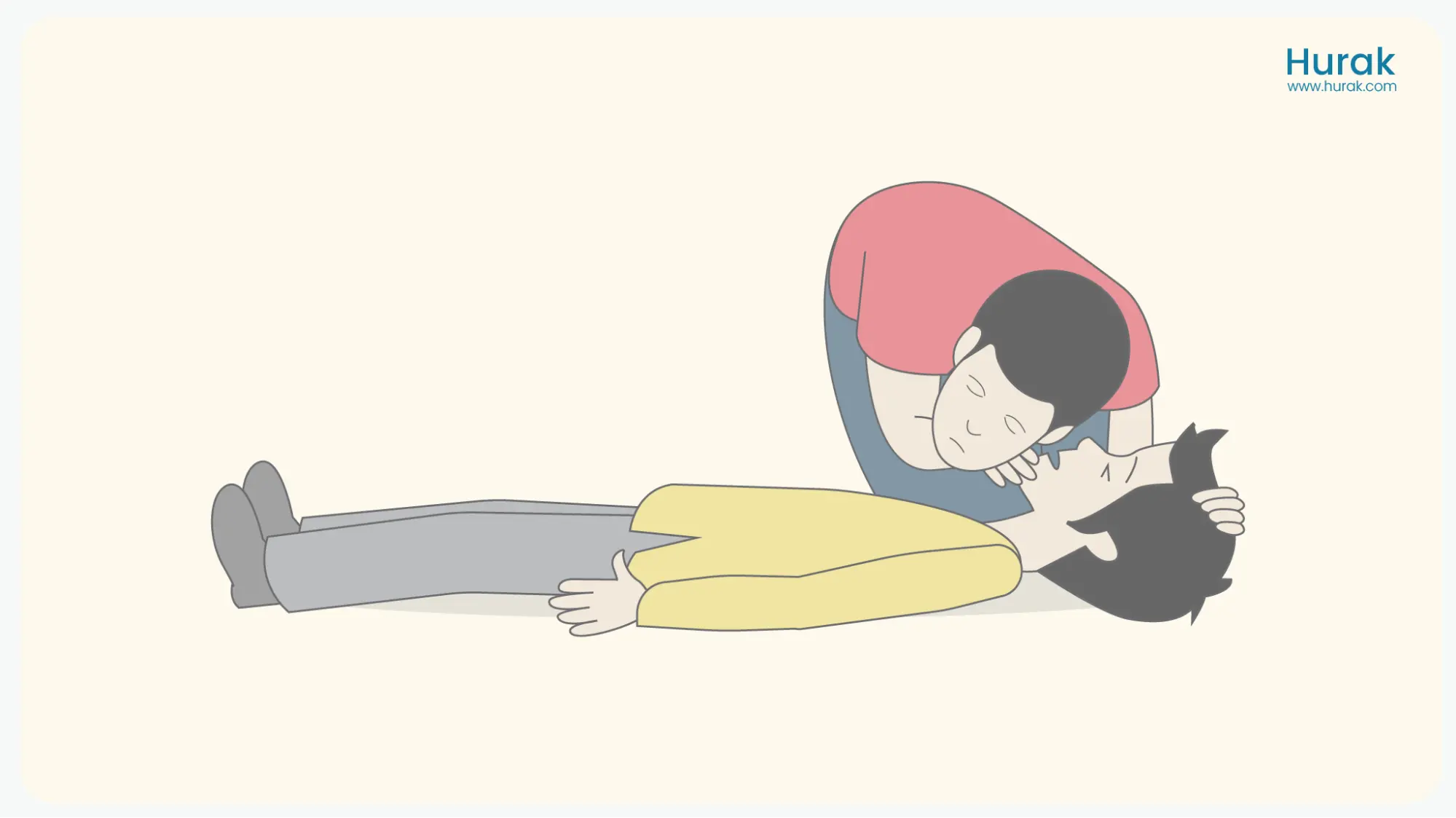
How To Do a CPR Compression on an Adult
If the person is not breathing or their breaths are weak (known as agonal breaths), place your hands in the middle of their chest with your shoulders directly above your hands. Keep your elbows straight.
Agonal Breathing:
Agonal breathing occurs when someone’s breathing is irregular and gasping, often making odd sounds. It can sometimes occur during a cardiac arrest. Bystanders may think the person is breathing normally. Treating someone with agonal breathing as if they are not breathing at all is essential.
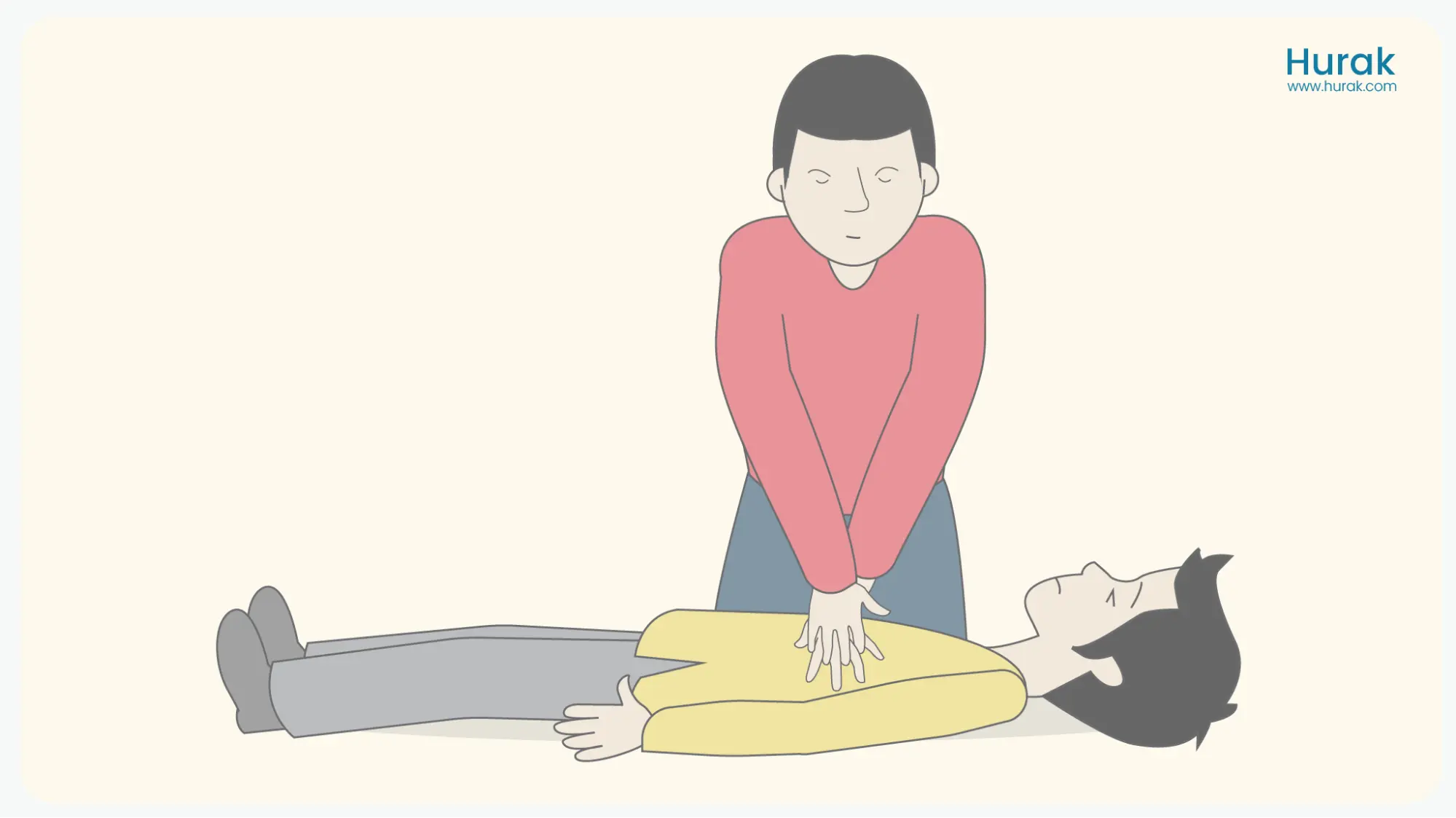
Give 30 chest compressions – press down firmly and quickly!
Use the heels of your hands to push straight down on the breastbone, about 5-6 cm (2-2.4 inches) deep.
Release pressure entirely after each compression to let the chest come back up. Keep a steady rhythm, aiming for 100 to 120 compressions per minute. Count out loud to keep track.
How To Breathe into an Adult’s Mouth During CPR
Next, if you are trained, tilt the person’s head back and lift their chin to open the airway. Pinch the soft part of their nose closed. If you have a barrier device, use it. Then, give two breaths into the person’s mouth, each lasting about one second, enough to raise the chest.
This makes one cycle of 30 compressions followed by 2 breaths.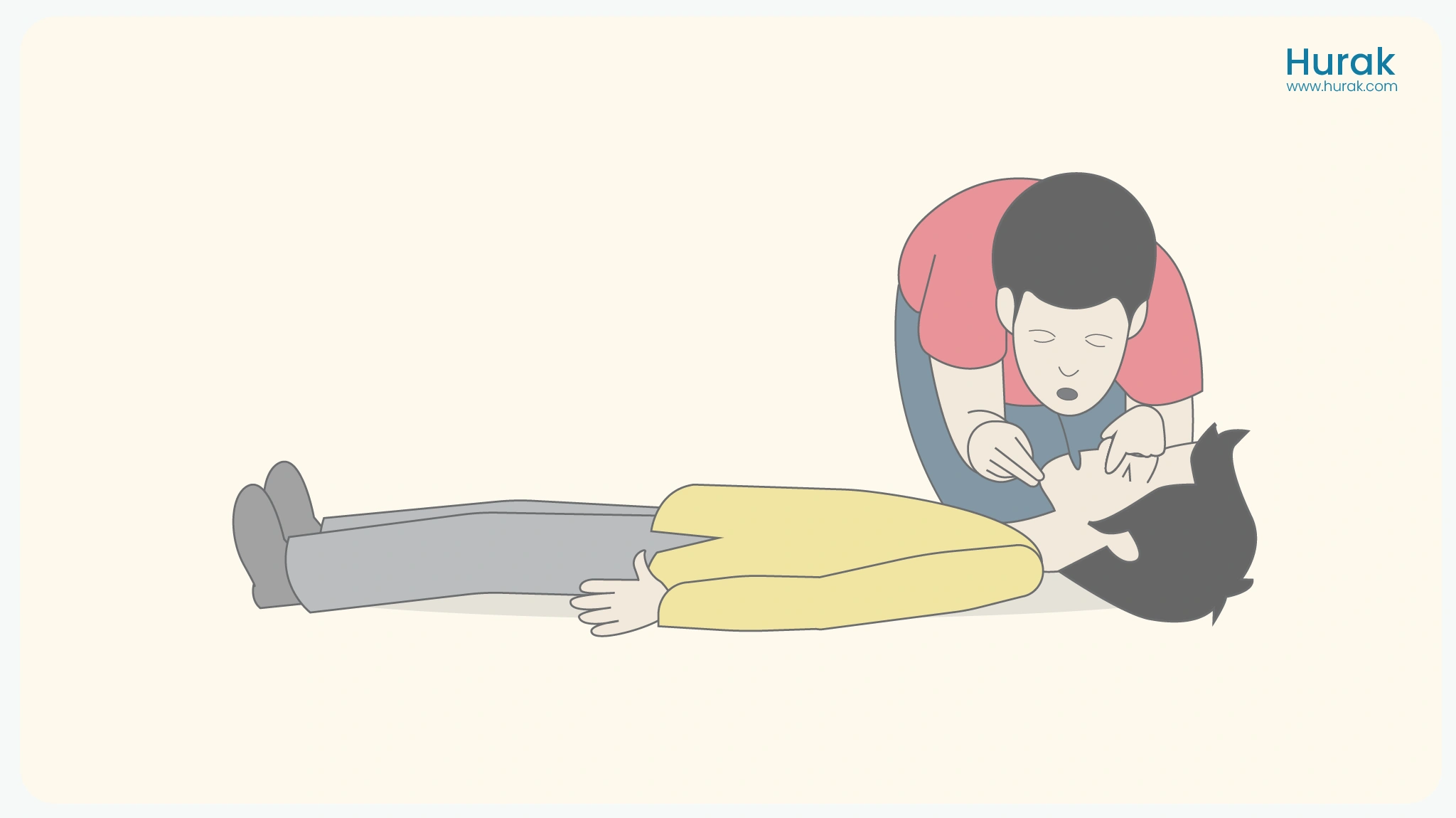
Keep doing CPR until an AED arrives, the person starts responding, or you are too tired to continue. When the defibrillator arrives, apply it to the person immediately.
How to Administer CPR on a Child
Look around the area where the casualty has occurred.
Check to see if the child responds. If not, get medical help and an AED if possible.
If you are alone and do not have a phone, do CPR for 5 cycles (around 2 minutes), then go for help. If you can, bring the child with you.
Next, check the airway and breathing for between 5 and 10 seconds.
Get Trained in All First-Aid Skills
First Aid Courses
Book NowRated Excellent
on major review sites

How To Do a CPR Compression on a Child
If the child is not breathing or breathing well, place your hands in the middle of their chest and press down firmly. Keep your elbows straight. Depending on the child’s size, you can use one or two hands.
Give 30 chest compressions: Push firmly and quickly!
Use the heels of your hands to press straight down on the breastbone. Each compression should be about a third of the chest depth or 5 cm (2 inches) deep.
After each compression, release pressure completely to let the chest back up. Keep a steady rhythm, aiming for 100 to 120 compressions per minute. Count out loud to keep track.
How To Breathe into a Child’s Mouth During CPR
Once you have performed compressions, open the airway by tilting the head back and lifting the chin. Use a barrier device if you have one. Then, give two breaths into the child’s mouth, just enough air to raise their chest.
This makes one cycle of 30 compressions followed by 2 breaths.
Keep doing CPR until an AED arrives, the person starts responding, or someone else takes over. If you get too tired, stop. Apply the AED as soon as it comes.

How To Administer CPR for Babies – Infant Casualty
Perform a scene survey of where the casualty occurred. Check if the baby responds. Gently tap their feet. If there is no response, get medical help and an AED if possible.
If you are alone and do not have a phone, do CPR for 1 minute, then get help. If you can, carry the baby with you.
Next, open their airway by touching their forehead and gently tilting their head back. Use the fingertips of your other hand to lift their chin.
Put your lips around the infant’s mouth and nose and blow gently for one second until their chest rises. Remove your mouth and wait for your chest to fall back to normal.
Repeat this for a total of five rescue breaths.
How To Do a CPR Compression on an Infant
Place two fingers just below the nipple line on the baby’s chest.
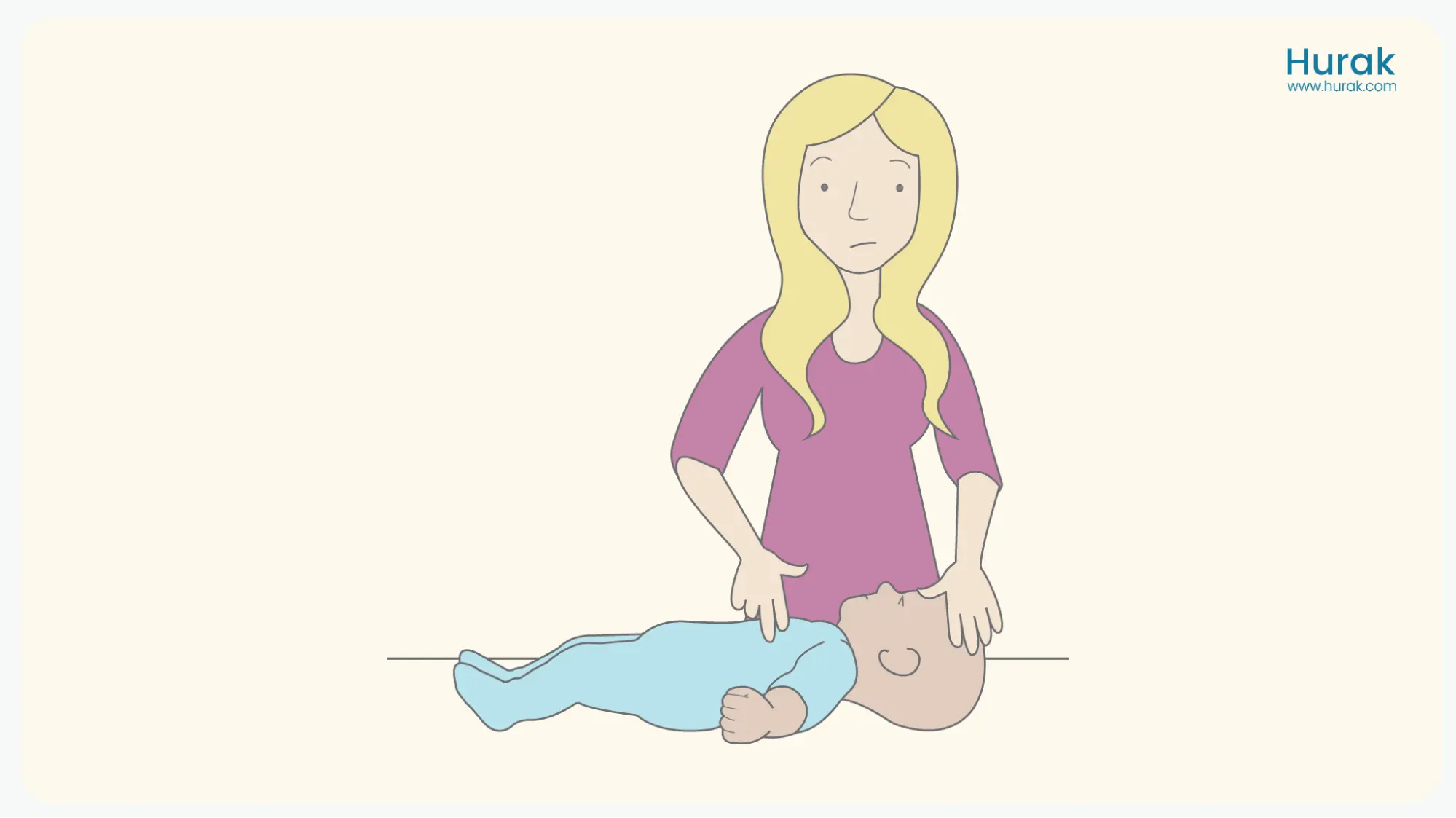
Press down on the breastbone about 4 cm (1 1/2 inches), around one-third of the chest depth.
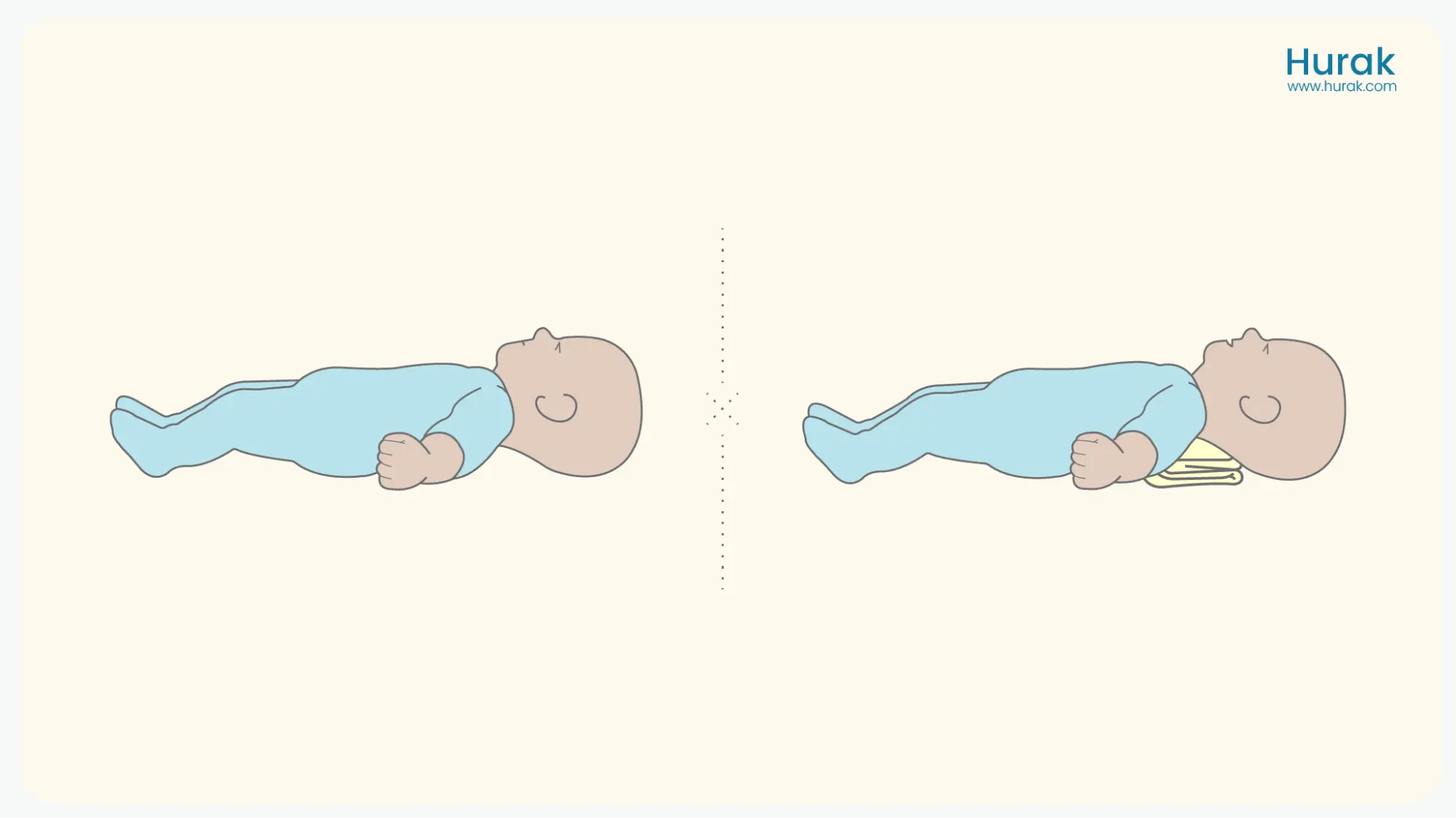
Do 30 chest compressions followed by 2 breaths (30:2)
Keep doing CPR until an AED is used, someone else takes over, or you are too tired. Use the AED as soon as it arrives.
How To Breathe into an Infant’s Mouth During CPR
Babies have big heads compared to their bodies, which can cause their airways to close. When babies lie on their backs, their heads tilt forward, closing their airway further.
When performing CPR, you might find putting a thin pad under the patient’s shoulders useful to help keep the airway open. But do not spend time looking for one.
Types of CPR
Depending on the circumstances and the number of people involved, CPR can be of different types:
- Chest compression-only CPR
- Dispatcher-assisted CPR
- How to take over CPR from another rescuer
- Two-rescuer CPR
Chest Compression-Only CPR
CPR guidelines emphasise recognising emergencies early and the importance of calling 9-1-1 if you find someone collapsed and unresponsive.
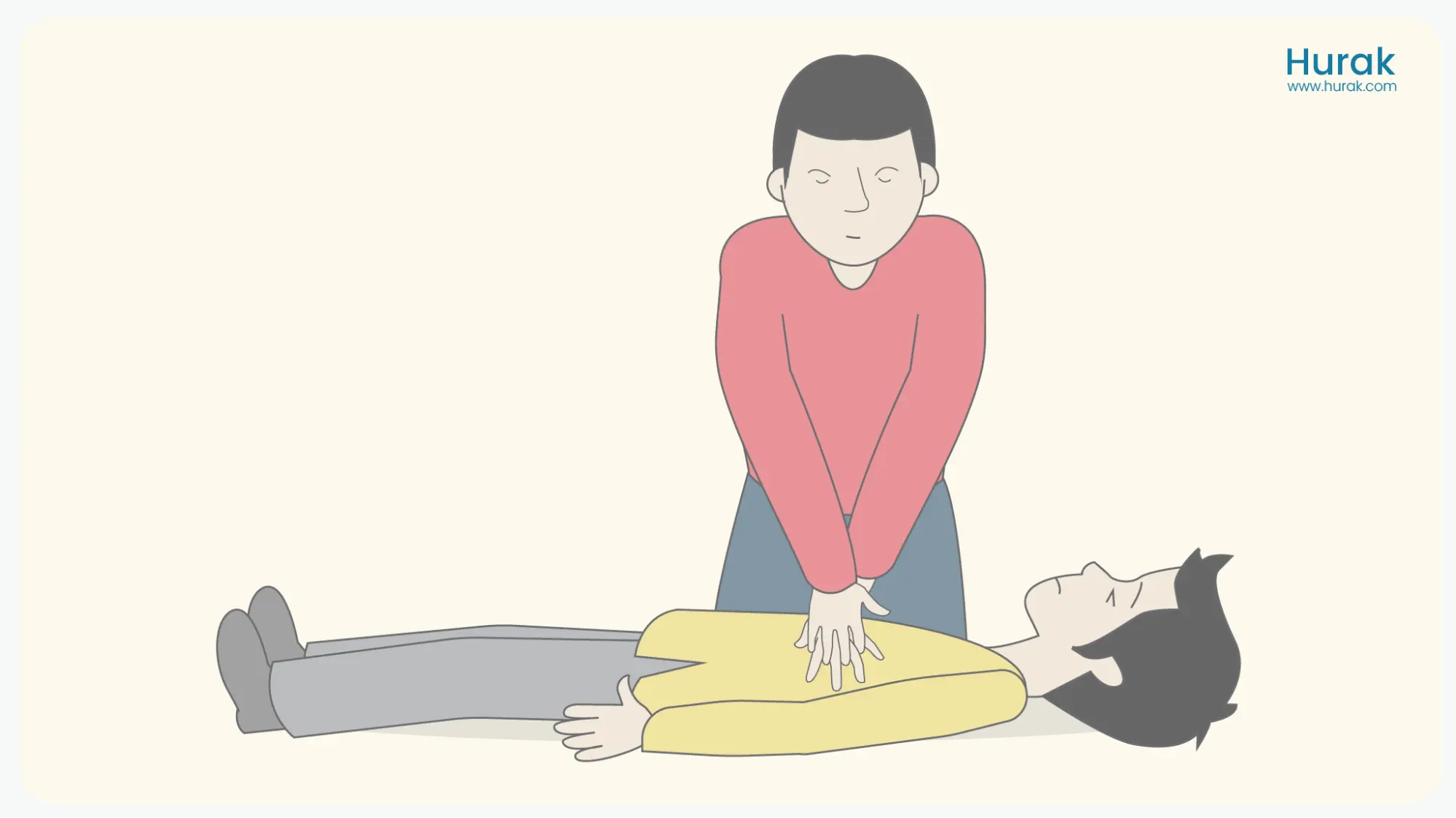
Compression-only CPR means doing chest compressions without mouth-to-mouth breaths. Give solid and quick compressions at the centre of the chest, aiming for 100 to 120 compressions per minute. Although this does not give the person oxygen, it is an option for people not trained in traditional CPR or those unsure of their ability.
Dispatcher-assisted CPR
In some areas, when you call 9-1-1, the dispatcher can guide you through the emergency until medical help arrives. Put your phone on speaker and place it near the person’s head. Keep talking to the dispatcher while you help the person.
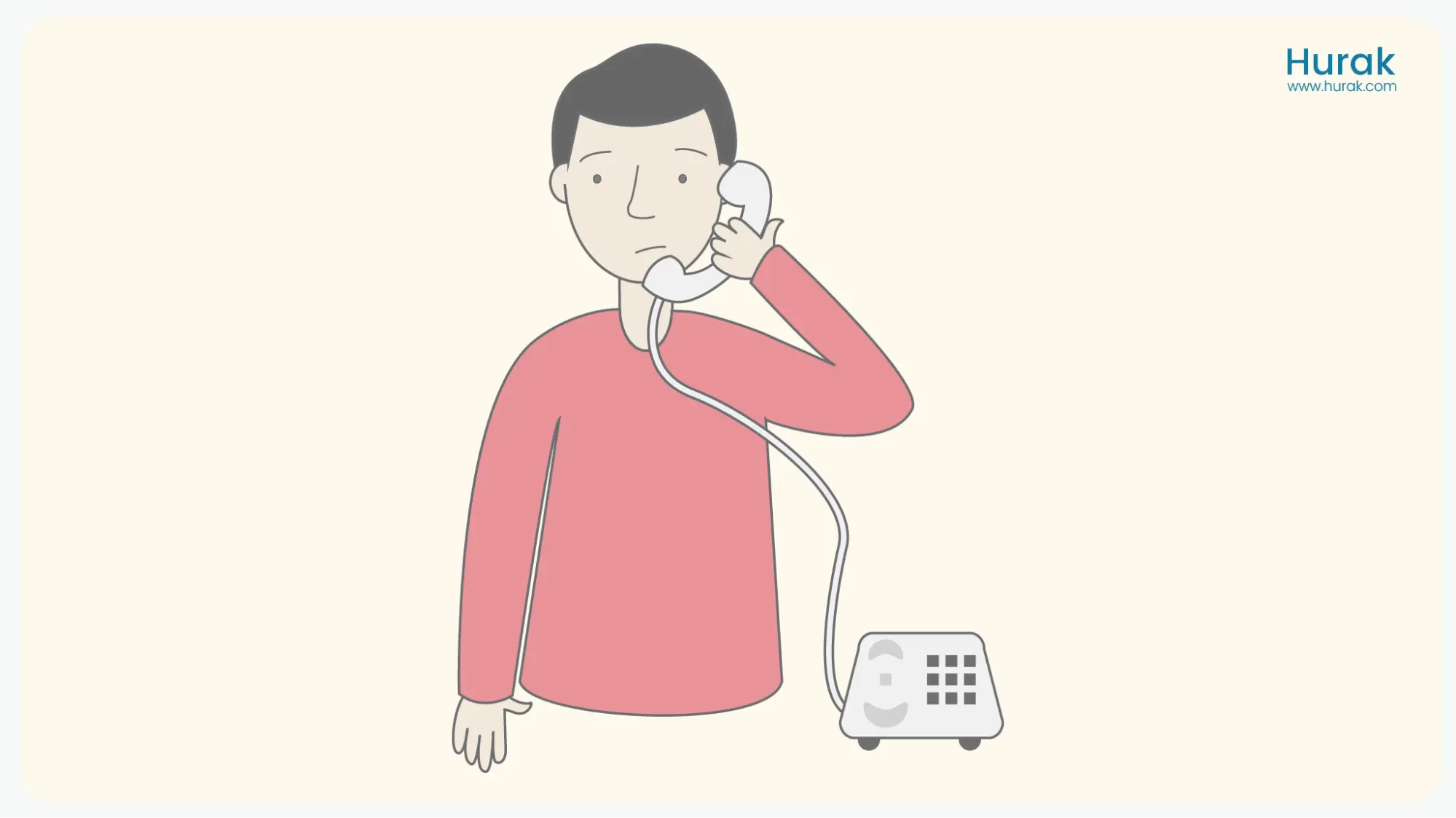
Hand-Over CPR: Taking Over CPR from Another Rescuer
Offer your assistance and let the rescuer know you are trained in CPR. Make sure medical help has been called.
Do 30 chest compressions followed by 2 breaths. Use your barrier device if you have one.
Two-Rescuer CPR
If two trained rescuers are available, they can work together to do CPR on someone who needs it. There are three good reasons why it is better for two people to do CPR:
- Doing CPR can be tiring. As the first aider gets tired, their chest compression quality might worsen. If two people share the job of compressing the chest, they can keep doing good compressions for longer.
- With two people doing CPR, they can take turns doing chest compressions and giving breaths. This means the compressions do not have to stop as often.
- When two people work together, they can encourage and help each other during a difficult situation. One person stays by the casualty’s head to do CPR with two rescuers. He keeps the airway open and breathes after every 30 compressions. The other person does the chest compressions.
To keep the compressions effective, they should switch roles every 5 cycles of compressions and breaths, about every 2 minutes.
Conclusion
If someone is not responding and breathing normally, CPR can help them survive until paramedics arrive. So, everyone needs to know how to do CPR, even if you still need to be formally trained in first aid. If you are not qualified, you should do chest compressions only for adults. But for children and babies, it is best to call for help first and then do CPR. Either way, doing CPR increases the chances of the person surviving.




